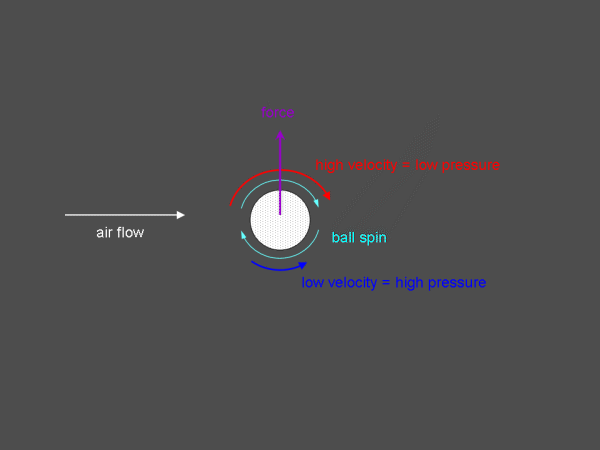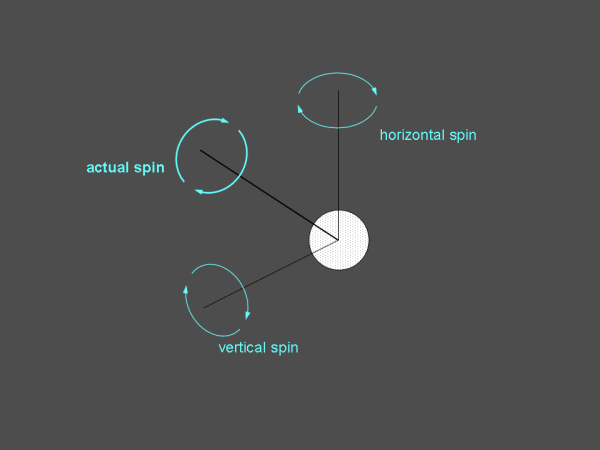
Air accelerates on the side of the ball spinning with the direction of the oncoming velocity, and air on the side of the ball spinning toward the oncoming velocity slows down. The dimples on a golf ball serve to enhance the effect of the ball's spin on the air around it. Faster moving air imposes a lower pressure on the surface, and slower moving air imposes a higher pressure, so the ball moves away from high pressure and toward low pressure. This is the same principal that airplanes use to generate lift, but rather than a rapidly spinning cylinder for their wings (which would theoretically work), they use an airfoil shape to promote accelerated flow over the top of the wing and generate low pressure to lift the airplane.
There is really only one axis of spin and it is not necessarily horizontal or vertical, but we can consider separating spin into two components and the individual effects of each. Vertical spin about a horizontal axis generates a lift force that enhances the vertical flight of the ball. This component of spin is due to the loft of the club face being different from the direction of the club. Horizontal spin about a vertical axis causes pressure differences on the sides of the ball, and causes the ball to curve sideways. When concerned about the direction of the ball, it is this horizontal spin that matters.
The Essence of Spin
(nearly all the aerodynamics you need to know)
Baseball pitchers use spin to throw balls that curve in various directions. A ping pong ball demonstrates radical curvature because the ball is very light relative to the aerodynamic force generated.

